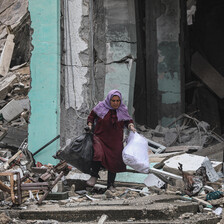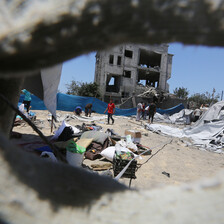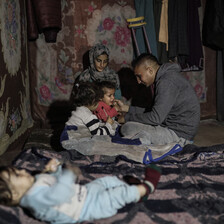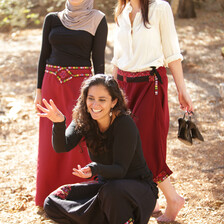The Electronic Intifada 12 February 2025
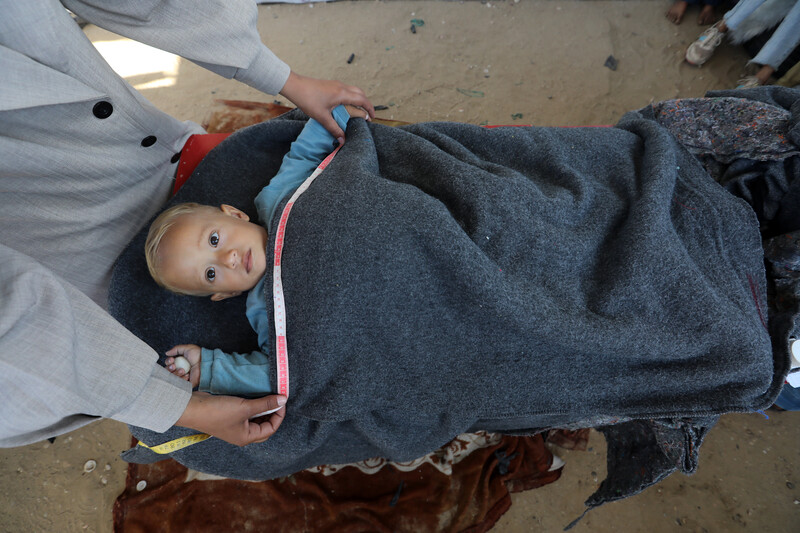
In Khan Younis in the southern Gaza Strip, a woman turns blankets into winter clothes, 30 October 2024.
APA imagesIn Gaza, where winter grips everything with its harsh hands, cold is more than just a sensation. Battling it is the foundation of the daily struggle for survival. The cold nights, which confine us to fragile tents and homes that no longer serve as shelters, leave us with only one choice: to face them with what we have or what we can create.
I remember the day in early December when an aid convoy arrived carrying new blankets. Everyone was grateful for what seemed like a small lifeline.
The aid eases the burden and cruelty of the Israeli blockade and the subsequent scarcity of resources, but it never entirely fills the gap between our needs and the resources available.
Yet the blankets that we received were coarse to the touch, heavy on our bodies and caused persistent itching for the 35 or so children in the camp.
Using them as covers felt more like trying to ward off the cold with medicine that might make you sick. While some left the blankets unused, my grandmother saw an opportunity, as she does with just about everything.
My grandmother began transforming the blankets into something we never expected: winter tops and trousers. She would sit near our small tent, warming herself in the sun, and do her work.
Using a needle and thread instead of a sewing machine, she reshaped the blankets, lining some with pieces of old summer clothes. Every piece of clothing she produced seemed like a story sewn with love and patience.
Word gets out
As the days passed, other women at the al-Azza camp near Khan Younis noticed my grandmother at work. Some brought her garments that seemed beyond repair – remnants of clothing that had been shredded by shrapnel. But my grandmother transformed and incorporated those pieces into tops and trousers that gave the children the wearable warmth they so desperately needed.
The cold spared no one and children suffered the most. Hence, my grandmother didn’t see those pieces of fabric as useless remnants but as raw material to craft new life.
What amazed me the most was her attention to detail. The blankets were incredibly coarse, but my grandmother wouldn’t allow that roughness to harm the children’s skin. She carefully sought out soft scraps of fabric, including worn-out T-shirts, and used them as inner linings.
“I won’t let this fabric hurt them,” she’d say as she finished stitching another piece.
But her creativity didn’t stop there.
A special connection
My grandmother wanted to add her own unique stamp to each piece of clothing she created. She embroidered the children’s initials onto the tops and trousers using colorful threads, making each item feel like a personalized gift.
For the children, those letters meant more than just a stitched name; they were a sign that someone cared enough to make them feel special. Wearing them felt like owning more than just a piece of cloth.
Seeing the children running and playing between the tents dressed in those colorful clothes embroidered with their initials brought me a simple kind of joy. My grandmother and the women around her turned what could have been a source of frustration into a beacon of hope.
My grandmother wasn’t just making clothes; she was teaching us that life is not only about what is given to us but also about what we create with our own hands.
In Gaza, we don’t have much, but we have enough to create something out of nothing. Perhaps we can’t change the cold, but we can certainly warm our hearts and those of the people around us.
Lina Hamdona is a writer and pharmacy student from Gaza.
